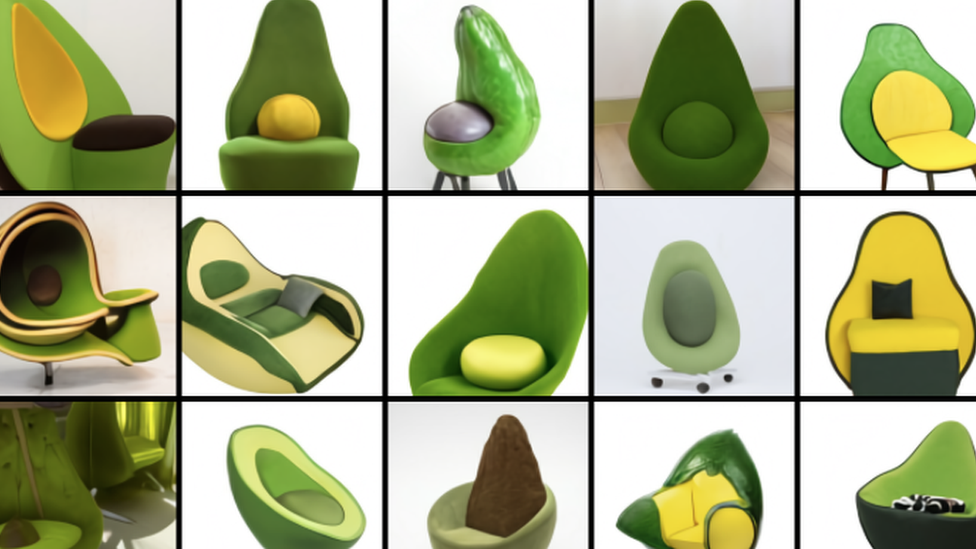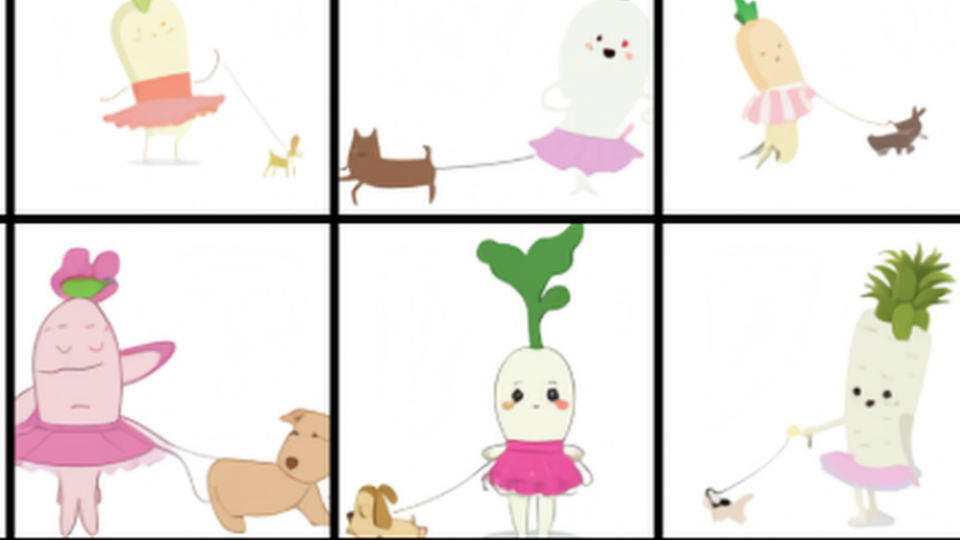AI-
“Dall-E was trained to generate images from short text-based descriptions, using 12 billion images and their captions sourced from the internet.“
The following written content by Jane Wakefield
Avocado-shaped armchairs, radishes in tutus and cats in sunglasses are among some surreal works of art created by an artificial-intelligence system.

Dall-E was trained to generate images from short text-based descriptions, using 12 billion images and their captions sourced from the internet.
Creator OpenAI previously produced a text generator that turns short phrases into stories, poems and articles.
Experts said the results of its latest innovation were impressive, if patchy.
Combining an understanding of both language and pictures will be the key to making AI smarter and the models devised by OpenAI make good strides towards this, most researchers agree.
OpenAI blogged Dall-E – named after surrealist Salvador Dali and the little animated robot Wall-E from the film of the same name – was a diverse artist, “creating anthropomorphised versions of animals and objects” and “combining unrelated concepts in plausible ways”.
But it admitted the success of the model depended on how the descriptions were phrased.
“As more objects are introduced, Dall-E is prone to confusing the associations between the objects and their colours, and the success rate decreases sharply,” researchers wrote.

Users are also invited to create their own images, changing parameters such as colour, shape, and design.
AI systems could have “significant, broad societal impacts”, the Californian company, started in 2015, blogged.
And the potential for bias, the impact on jobs and other longer-term ethical challenges would need to be considered.
Google deep-learning engineer Francoise Chollet tweeted Dall-E’s work was “really cool”.
But Georgia Tech associate professor and AI researcher Mark Riedl tweeted that googling some of the descriptions, including “burrito animals” and “cartoon daikon”, could throw up similar images, suggesting Dall-E had copied rather than created some its work.
He also highlighted some of its failures, such as attempts to combine a snail and a harmonica. Read more from Yahoo! News.
Follow other related unbiased news stories from News Without Politics





